By definition, a filter aid is an agent consisting of solid particles that improves filtering efficiency by building up a porous, permeable and rigid lattice structure—the filter cake—that retains solid particles and also helps flow control. The septum, usually screen or cloth, serves principally as a support for the filter cake. The filter aid forms a porous layer on the septum and becomes the filtering medium that traps the solids and prevents them from blinding the septum. Irregularly shaped particles interlace and overlay leaving open spaces—billions of microscopically fine interstices—between the filter aid particles. The size of these openings is so minute that the unwanted solids are strained from the liquid, and the sheer number of openings compensates for their small size, resulting in fast flow rates and brilliant clarity.
Filter aids may be applied either as precoat on the septum and/or as body feed in the liquid. As precoat, filter aid can be applied as a thin layer over the filter before the suspension is pumped to the apparatus. A precoat prevents fine suspension particles from becoming so entangled in the filter medium that its resistance becomes excessive. Further, it facilitates the removal of cake at the end of the filtration cycle.
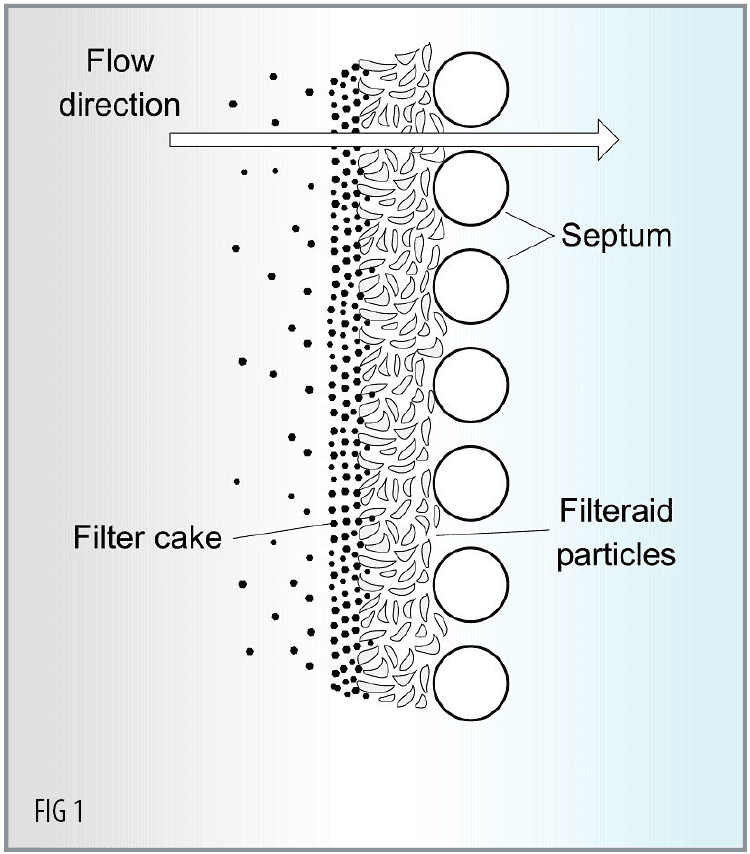
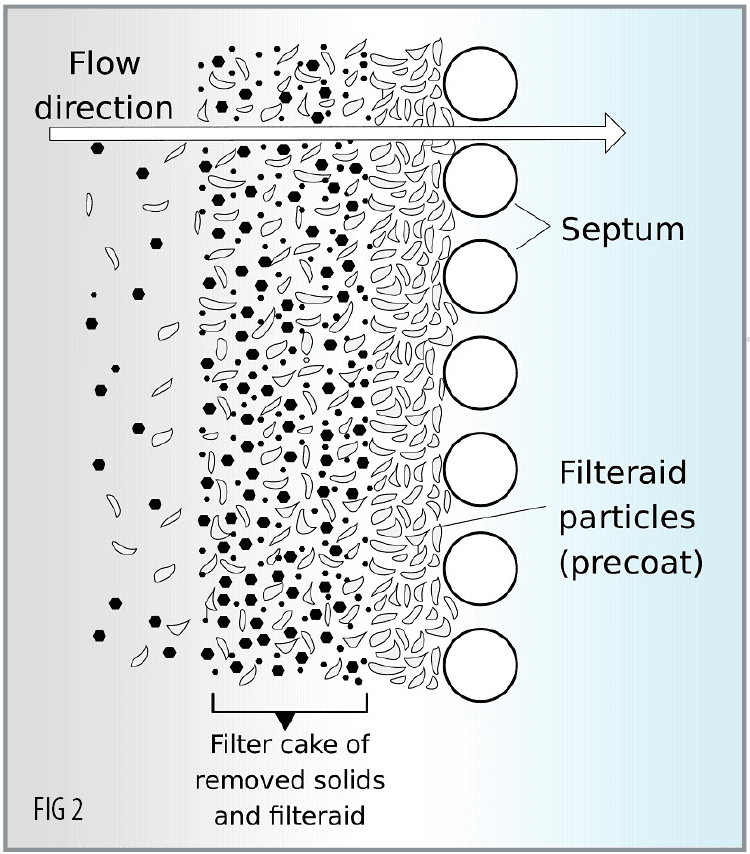
(Images courtesy of P. Angelopoulos; the images can be used by PI and PI members)
ADVANTAGES OF PERLITE FILTER AID
- Local supply—near the use point
- Specially tailored to the local application
- Minimal lead time
- Low filter cake density (< 270 kg/m³)
- Wide permeability
- Less cake cracking and easy cake release
- Wide variety of properties (density, size)
- More economical filtration (same volume, half mass)
- Perlite filter aids satisfy the US Food Codex and relevant EU regulations
- Not chemically modified material
- Sterile and inert nature
- Safe handling and easy disposal
Usually, the thickness of the precoat is between 1.5 to 3.0 mm, thus 1.5 to 3 L of wet perlite filter aid are needed to coat about 1 m² of septum surface[1]. In any case, precoat characteristics can only be determined after the implementation of experiments under realistic filtration conditions.
After filter precoat application, a certain amount of the filter aid material can be incorporated with the suspension before introducing it to the filter. The addition of filter aids increases the porosity of the cake, decreases its compressibility, and reduces its resistance. Typical filter aid additions are in the range of 0.01 – 4% by weight of suspension; however, the optimum amount can and must only be determined from experiments. Excess amounts of filter aid will decrease the filtration rate[1]. Low shear agitation of the slurry is required for perlite filter aids. High shear, high concentrations will result in uncontrolled breakdown of the perlite.
Perlite Filter Aid Grades & Applications
Perlite filter aid is created through the expansion of perlite ore, the milling of that expanded perlite, and the classification of milled expanded perlite using cyclonic air separation.
A range of perlite filter aid grades are produced, some finer, and some coarser, with varying technical properties to optimize filtration capacity for a wide variety of applications. The various grades utilize the jagged interlocking structures of the particles to create billions of microscopic channels between the filter aid particles.
The flow rate of various filter aid grades is calculated using Darcy’s Law, which expresses permeability as the rate of flow of fluids through porous media. A filter medium with a permeability of 1 Darcy allows the flow of 1 cm³/s of a fluid with viscosity 1 cP (similar to water) under a pressure gradient of 1 atm/cm acting across an area of 1 cm². The determination of the filter aid grade with optimum filtration performance and effectiveness can only be done after experiments.
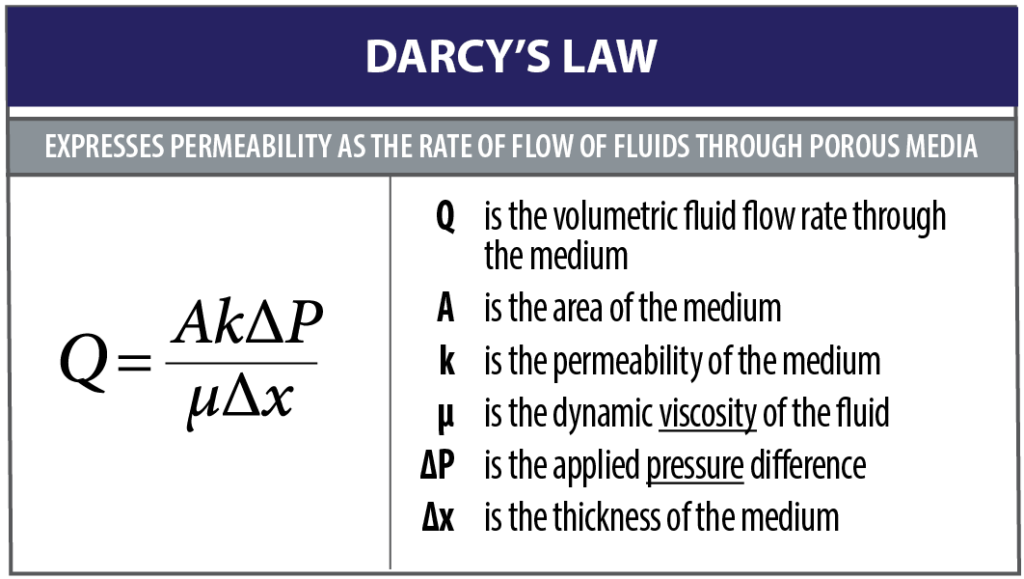
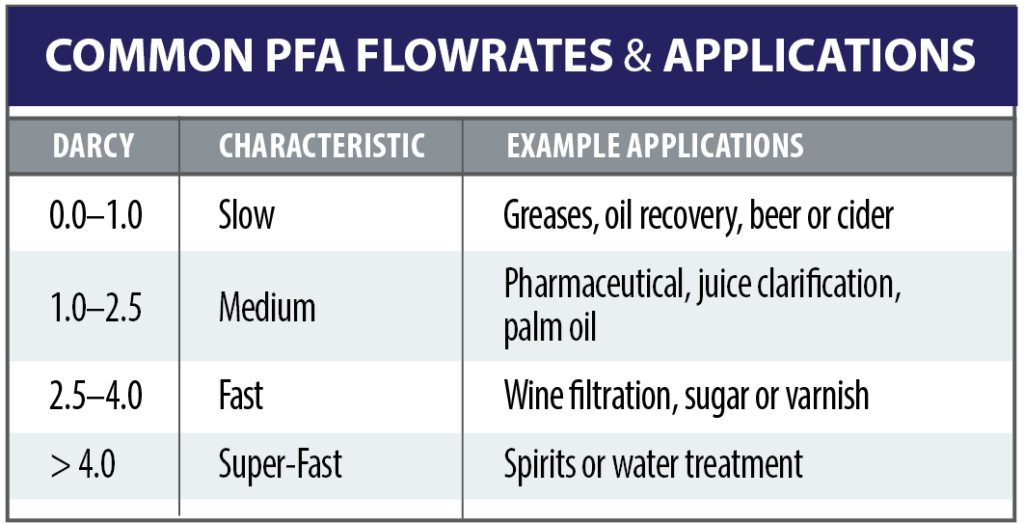
Perlite vs. Diatomaceous Earth (DE)
Diatomaceous earth (DE), or simply diatomite, is made from the fossilized remains of tiny, aquatic organisms called diatoms. Their skeletons are made of a natural substance called silica. Over a long period of time, diatoms accumulate in the sediment of rivers, streams, lakes, and oceans. This material is mined and calcined (heated at high temperature) to destroy any organic matter and agglomerate the diatoms together to achieve different rates of flow. The diatomaceous earth is then milled and separated into various filter aid grades through the use of air flotation[2].
Perlite filter aids are functionally like DE filter aids, and usually both are used when the collected solids are not wanted for subsequent treatment[3]. However, the different origin and physicochemical properties render perlite advantageous in the following ways:
- A wide network of perlite suppliers is established assuring quick and uninterrupted local supply. This is not always the case for DE, which has long lead times and requires significant inventories to account for variations in demand.
- Perlite has 30-50% less bulk density thus comparable filter applications typically require 30%-50% less additive[1], [4].
- Perlite filter aids form lower density cakes than diatomite filter aids of comparable or better permeability and filtration fluxes[5], [6].
- Perlite filter aids generally contain no, or very little crystalline silica, thus do not pose a health hazard.
- As a consequence of its inert nature, perlite filter cake is not subject to the strict regulations governing its disposal[7].
- DE possess higher soluble iron that may affect the quality of edible and drinkable products[7].
Health & Safety
Perlite is an inert, non-crystalline material of aluminosilicate composition that does not impart taste, odor or color. It is listed in the US Food Chemicals Codex and in relevant EU regulations, while its use in feedstuff is widespread. Perlite filter aids are Generally Recognized as Safe (GRAS) for use in food processing. All foods and beverages must be filtered with products made from components complying with international food and drug regulations for food contact use[8]. Furthermore, depending on what is being filtered, spent perlite filter cake may contain nutritious by-products that have been strained out of the original liquid. These can be reclaimed, composted, or used as a stock feed.
Perlite filter aids are not considered dangerous to human beings, and no hazard warnings are generally required for perlite products. Some DE grades contain crystalline silica, which is a carcinogen, and must be listed as a hazard to inhalation in any associated Safety Data Sheet. On the other hand, perlite is regarded as what was formerly termed a ‘‘nuisance dust’’, thus it is still recommended to use a respirator when dispensing it to minimize inhalation.
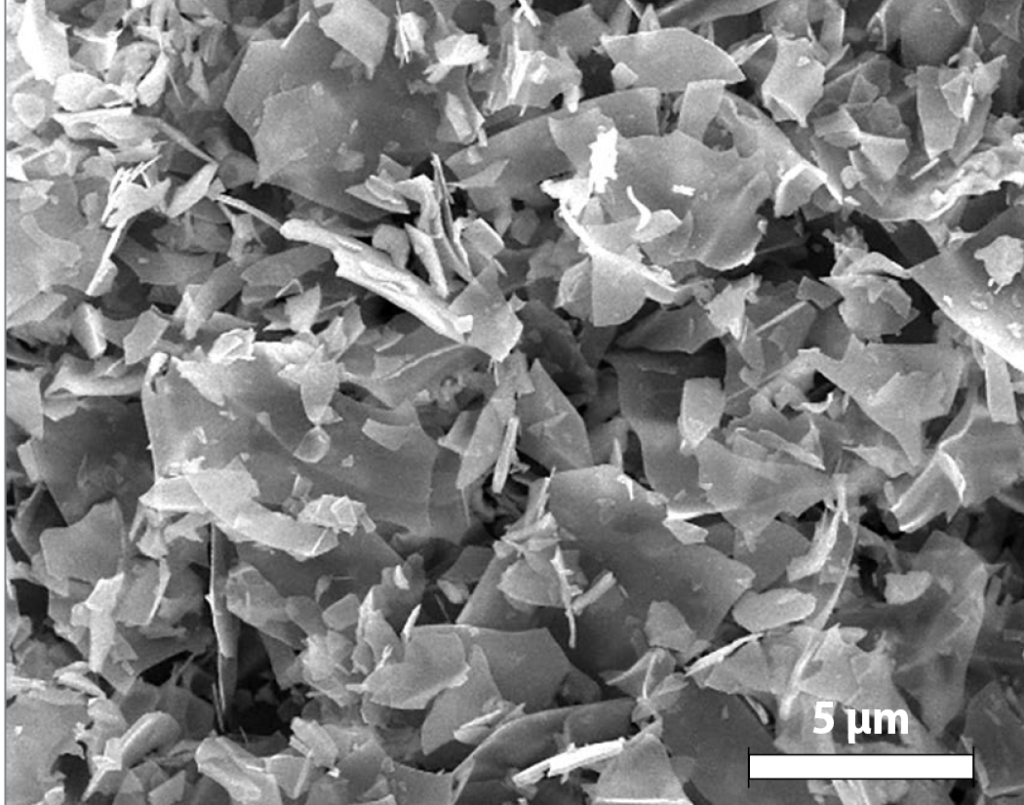
Replacement of DE with Perlite
Perlite filter aids can be used with both pressure and vacuum filtration equipment by merely replacing present DE material volumetrically. It is quite common to use the same grade of filter aid for both pre-coat and body feed applications. When two different grades are used, the body feed will typically be the more “coarse” or “open” grade. (This does not refer to the grades in dual pre-coat applications).
Several methodologies exist for choosing the correct grade of perlite. One method entails choosing the grade that best removes targeted solids at the flow rate and cycle length required. The other method involves using a grade whose median particle size is comparable to the solids being filtered, i.e., for fine solids use a “fine” grade of filter aid; for coarse solids use a “coarse” grade of filter aid.
Less Mass. Great Performance.
- Normally, the thickness of filter aid layer as precoat ranges between 1.5 to 3.0 mm, thus for 1m² filtration area 1.5 to 3.0 L of filter aid is required. The bulk density of filter aid grade expanded perlite ranges between 100 and 200 kg/m³, possessing mean value of 150 kg/m³, while diatomaceous earth has a bulk density of about 300 kg/m³. A 3.0 mm filter aid layer of 1 m² filtering surface requires 900 g of diatomaceous earth, or just 450 g of perlite.
- The mean bulk density of filter cake is between 100 and 270 kg/m³ (mean 185 kg/m³) when perlite filter aid is used, and between 230 and 420 kg/m³ (mean 325 kg/m³) when DE is used. The perlite filter cake density is approximately 55% lower compared to that of diatomaceous earth.
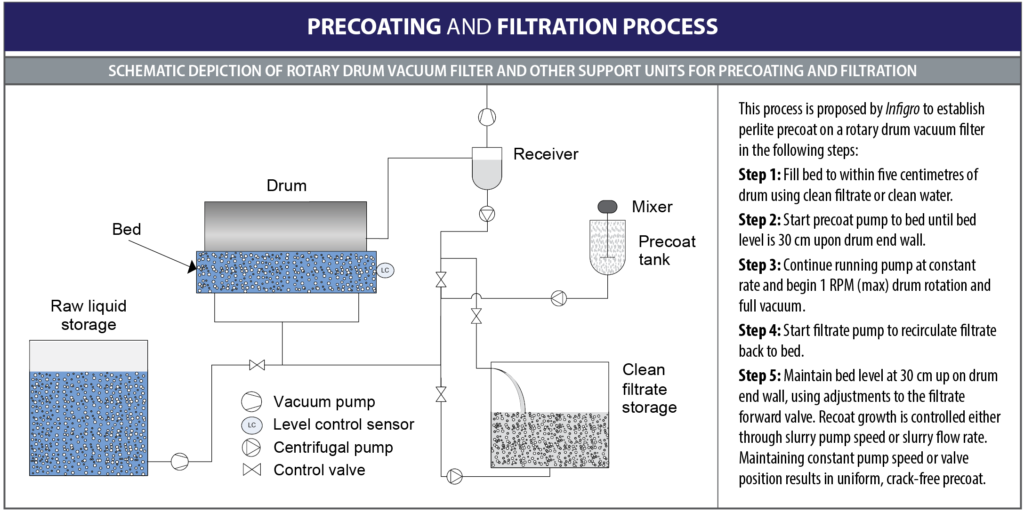




(Images courtesy of Supreme Perlite)
BIBLIOGRAPHY
[1] N. P. Cheremisinoff, “Filter Media and Use of Filter Aids,” Liq. Filtr., pp. 19–58, 1998.[2] G. Bergquist, “Relationship, selection, and optimization of filter aid, filter media and clarification technologies for contaminant fines removal from process slurries and liquids,” in Industry Candidates Poster Session 2019, Held at the 2019 AIChE Spring Meeting and 15th Global Congress on Process Safety, 2019, no. May, pp. 110–125.
[3] G. C. Trevor Sparks, “Section 2 – Filter Media,” Filters Filtr. Handb. (Sixth Ed., pp. 55–115, 2016.
[4] B. A. Perlmutter, “Chapter 1 – Introduction,” Solid-Liquid Filtr., pp. 1–20, 2015.
[5] K. Sutherland, Filters and Filtration Handbook, 5th ed. Butterworth-Heinemann, 2008.
[6] N. S. Zafisah, W. L. Ang, D. J. Johnson, A. W. Mohammad, and N. Hilal, “Effect of different filter aids used in cake filtration process on the removal of suspended solids in anaerobically digested palm oil mill effluent (POME),” Desalin. Water Treat., vol. 110, pp. 362–370, 2018.
[7] R. S. Jackson, Post-Fermentation Treatments and Related Topics. 2014.
[8] T. Sparks and G. Chase, “Solid–Liquid Filtration – Examples of Processes,” Filters Filtr. Handb., pp. 297–359, 2016.
To download a .pdf of the Perlite Filter Aids Explained brochure, click here.
If you have technical questions on this topic, please email the technical contacts listed on our contact page.
Copyright © 2020 Perlite Institute All Rights Reserved
